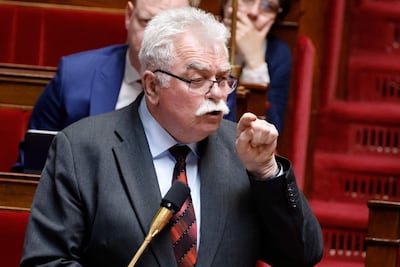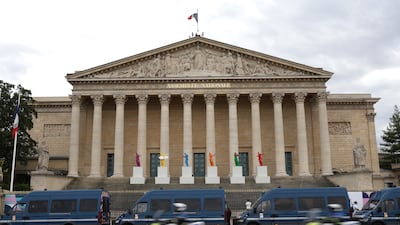The centrist candidate from French President Emmanuel Macron’s party has been re-elected to a second term leading the National Assembly.
Yael Braun-Pivet's victory is a sign that Mr Macron's coalition may be best placed to form a new government after he dissolved the legislature last month.
Ms Braun-Pivet, the pro-business Renaissance party candidate, narrowly won the vote for parliamentary president by 13 ballots with support from centrist and centre-right politicians from outside her alliance.
The appointment means she will continue to manage the agenda and oversee debates in France’s most powerful chamber.
A win for the leftist camp would have increased pressure on Mr Macron to allow it to form a government.
A left-wing coalition came first in the July 7 snap elections but failed to capitalise on its relative win.
Negotiations to agree on a name to put forward to replace caretaker Prime Minister Gabriel Attal have caused tension and highlighted divisions.
Results were announced after a third round of voting was necessary for a winner to emerge.
The first two rounds require an absolute majority for a president to be nominated but the threshold is reduced to a relative majority in the third round.
The candidate put forward by a leftist coalition, communist MP Andre Chassaigne, led in the first round with 200 votes but his rival Ms Braun-Pivet overtook him in the second round with 210.
But critics have already warned that her victory will cause discontent after her group's poor results in the election.
The election yielded a National Assembly of 577 MPs divided into three about equal blocs, although the left came first with a handful of MPs more than the centrists, who are ahead of the far-right bloc.
Coalition negotiations have been slow and frustrating in a country with no history of broad coalitions since the Fifth Republic was established in 1958.
"France does not trust the idea of coalitions. There is a persistent idea that they are fragile and can break," constitutional expert Anne Levade told The National.
Speaking to BFMTV before the vote, socialist leader Olivier Faure complained about long discussions to agree on a prime minister and called for left-wing MPs to settle on a candidate with a vote.

Far-left group France Unbowed rejected the idea of a vote.
It "paused" negotiations this week and the party has put forward the name of communist politician from La Reunion, Huguette Bello.
Socialists have backed the candidacy of diplomat Laurence Tubiana.
Green Party leader Marine Tondelier said on Wednesday that she was "disgusted, fed up and tired". She apologised that "this is the spectacle we offer to the French".
Mr Macron has tried to show he is above the political arguments, saying in a letter last week that "no one had won" – in contradiction to the left-wing bloc's claims – and calling for political parties to "build compromises".
His remarks were in stark contrast to his own unwillingness to work with others since he became President in 2017, said Harvey Feigenbaum, professor of political science at George Washington University.
Mr Macron has pursued deeply unpopular policies, including a pension reform, and has forced through those moves with a special section of the Constitution that allows him to do so without a vote.
"It's not just the far right and the far left that hate him," Mr Feigenbaum said. "His own party also hates him because of the snap election that caused many of them to lose their jobs.
"If he had been more flexible he would be able to build a coalition today. It is a state of the unknown."


